| |
|
Do you Whistle while your at work?
Preparing and Training…
Andrew Castiglione
Founder of Ken Aston Referee Society
 |
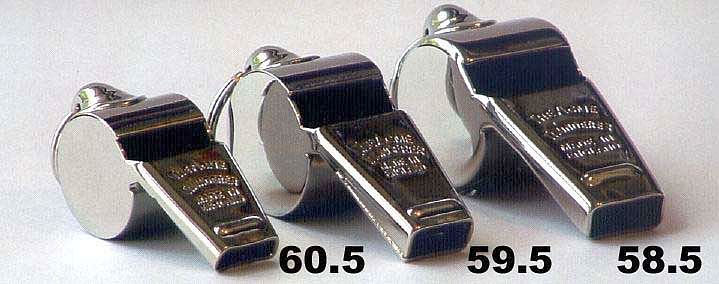 |
Small Whistle...
with
tapered mouthpiece |
Medium Whistle...
with
tapered mouthpiece |
Large Whistle...
with
tapered mouthpiece |
| High Pitch |
Medium to High pitch |
Deep Tone |
The first major sports event to be refereed with a whistle was a
Soccer Match, held in 1878 at the English Soccer Club ~ Nottingham Forest.
Before that, the referee had signaled to the players by waving a...
Handkerchief.
The whistle he used was a brass whistle, Made by [Acme
founder Joseph Hudson] and it was pea less.
History of the Whistle
The protocols of the Whistle are here...
-= Whistle While You Work =-
|
Always
play to the whistle
Wherever football is played, the chances are that the
referee's whistle is an 'Acme Thunderer'. Invented by
Joseph Hudson, an English toolmaker from Birmingham, in
1884, the Thunderer has been heard in 137 countries; at
World Cups, Cup Finals, in parks, playing fields and beaches
across the globe.
Over 160 million Thunderers have been manufactured by Hudson
& Co., which is still based in Birmingham, England. Apart
from football, Hudson whistles have also been used by
crewmen on the Titanic, by British 'bobbies' (policemen) and
by reggae musicians.
Today the
Fox 40
series of whistles are very popular with many referees
because of their "pea-less" design.
1860/70s:
A toolmaker in England, called Joseph Hudson, converted his
humble washroom at St. Marks Square in Birmingham, which he
rented for 1s. 6d. (one shilling and six pence per week)
into a whistle making workshop.
1878: It was generally written that
the first football match to be officiated with a whistle was
held in 1878 at the English Football Association Cup 2nd
Round game between Nottingham Forest (2) v Sheffield (0).
This was probably the 'Acme City' brass whistle, originally
made by Joseph Hudson around the year 1875. Before
that, signals where communicated by the umpires to the
players by waving a handkerchief, a stick or by shouting.
In 1878, football matches were still
officiated by two umpires who patrolled inside the field of
play. The Referee of those days, took a subservient role on
the touchline, and was only used as a mediator if the two
umpires were unable to reach a decision. It would therefore
have been most unlikely for the Referee of 1878 to require a
whistle for his 'referring' role. The two umpires would have
been the whistle blowers in these games.
1883: Joseph Hudson created the first London Police
whistle to replace the hand rattle. Joseph came by accident
across the distinctive sound required, when he dropped his
violin. As the bridge and strings broke it murmured a dying
note that lead to the perfect sound. Enclosing a pellet
inside the policeman's whistle created the unique warbling
sound, by interfering with the air vibration. The Police
whistle could be heard over a mile away and was adopted as
the official whistle of the London Bobby.
1884: Joseph Hudson, supported by his
son, continued to revolutionize the world of whistles. The
world's first reliable 'pea' whistle 'The Acme Thunderer' is
launched, offering total reliability, control and power to
the Referee.
1891: It was not until 1891 that
umpires were abolished to the touchline as linesmen, and the
Referee is introduced - operating for the first time on the
field of play. It was probably here, when the Referee (as
opposed to the umpires) first used the whistle, by which
time the Referee was now regularly required to stop play for
infringements. The whistle was proving to be a very useful
tool indeed.
1906: The first attempts to produce
molded whistles from a material known as vulcanite were
unsuccessful.
1914: As Bakelite started to develop
as a molding material, the first early plastic whistles
were made.
1920: An improved 'Acme Thunderer'
dates from around 1920. It was designed to be smaller,
shriller and with its tapered mouthpiece, and was more
comfortable for referees. Whistle 'Model No. 60.5, a small
whistle with a tapered mouthpiece produces a high pitch -
and could have been the type of whistle used in the first
Wembley Cup Final held on 28 April 1923 between Bolton
Wanderers (2) v West Ham United (0) and was designed for use
in big crowds. And there was a big crowd that day of
126,047. The Model No. 60.5 is still available today.
1930: The 'Pro-Soccer' whistle,
first used in 1930, had a special mouthpiece and a barrel
for even greater power and a higher pitch for use in a noisy
stadium.
1988: The 'Tornado 2000.' first
made by Hudson was used at World Cups, UEFA Champion League
matches and at the F.A. Cup Final and is a powerful whistle.
This higher pitch gives greater penetration and creates a
crescendo of sound that cuts through even the greatest crowd
noise.
1989: The ACME Tornado is
introduced and patented, and offers a range of six pea less
sports whistles with high, medium and low frequencies for
every sport. The Tornado 2000, was probably the ultimate in
power whistles.
2004: There are many whistle
manufacturers, and ACME continues to produce quality
whistles. The Tornado 622 has a square mouthpiece, and is a
bigger whistle. Medium high pitch with deeper discord for
softer sound. Very loud but less harsh. The Tornado 635 is
extremely powerful, in pitch and loudness. Its unique
unconventional design is for those who want something that
really stands out from the crowd. Three different and
distinctive sounds; perfect for "three on three" or any
situation where games are played in close proximity. The
Thunderer 560 is a smaller whistle, with a high
pitch.
The popular Fox 40's range also offers some excellent
whistles. The FOX Classic - is their loudest, shrillest
penetrating power whistle. Its patent pea-less design is
ideal for outdoor safety as it is virtually indestructible,
has no moving parts to jam or freeze and can be heard up to
a mile away. It is the recommended safety whistle of the
Scouts Association and the Duke of Edinburgh's Awards Scheme
and is used by many Referees. The Fox Classic CMG has a
'Cushioned Mouth Grip' that enhances the original Fox
Classic design. This added feature increases comfort and
grip during prolonged use, and is ideal for officials who
carry the whistle in the mouth during matches. The Fox Mini
Compact, has a smaller mouthpiece, and has the same pea-less
design and ultra shrill tone of the Fox Classic (it is ideal
for Lady's and Children's safety). The Fox Pearl is a
patented two chamber pea-less whistle, with a low pitched
tone, and is another
favorite
with multi-sport referees and coaches. The Foxtreme, is a
popular choice with younger users and is the same design as
the Fox Pearl but is available in an attractive
marbleized color
scheme, each whistle having it's own unique color
and pattern formation.
The Fox 40
"pea-less" whistle originated from an idea by Ron Foxcroft a
USA basketball Referee who like others, had experienced
problems with pea whistles not reacting quickly enough, and
were unable to be heard above a large crowd noise. He
explains. "They have a cork pea in them and when you blow a
pea - whistle really hard, nothing comes out. When they're
frozen or wet or get some dirt inside, they lose their
efficiency."
Foxcroft
listed a number of improvements that could enhance the
performance of a whistle, and showed them to, Dan Bruneau
the President a plastics molding company Promold
Corporation, based in Stoney Creek, Ontario. The company
agreed to manufacture the whistle parts designed by Foxcroft.
Promold went on to perfect a plastic molded injection
process that ultrasonically welded together whistle parts,
rather than glued them. Chuck Shepherd, an Ontario design
consultant took on the project. It took 14 prototypes
to perfect the first Fox 40 pea-less whistle, which was
patented on Ron Foxcroft's 40th birthday.
This
whistle was first professionally used at the Basketball, Pan
Am Games in Indianapolis. It was not long after this,
that other sports realized its quality. Its tones were
heard above the crowd at the Seoul Olympics, and was the
predominant whistle used by Referees in the 1990 World Cup
Soccer held in Italy and the 1994 World Cup held in the
United States. The Fox 40 whistle is now patented in many
Countries, and is popular not only with Referees, but with
coaches, water safety, rescue teams, personal safety, dog
owners and trainers, and many other sports enthusiasts.
It is also an approved and recommended sound signaling
device with Coast Guards Worldwide.
How does
a whistle work?
All whistles have a mouthpiece where the
air is forced into a cavity or hollow confined space. The
air stream is split by a bevel, and partly whirls around the
cavity before exiting though an opening (or sound hole)
which is usually small in proportion to the size of the
cavity. The size of the whistle cavity and the volume of air
contained in the whistle determine the pitch or frequency of
the sound produced.
The whistle construction and the design
of the mouthpiece also have a dramatic effect on sound. A
whistle made out of thick metal will produce a brighter
sound compared to the more resonant mellow sound if thinner
metal is used. Modern whistles are produce using different
types of plastic, which increases the tones and sounds now
available. The design of the mouthpiece can also
dramatically alter the sound. Even a few thousandths of an
inch difference in the airway, angle of the blade, size or
width of the entry hole, can make a drastic difference as
far as volume, tone, chiff (breathiness or solidness of the
sound) are concerned.
|
In
a pea whistle, the air stream enters through the
mouthpiece as shown (1). It hits the bevel
(2), and
splits outwards into the air, and inwards filling
the air chamber (3) until the air pressure inside
the chamber is so great, it pops out of the sound
hole, making room in the chamber for the whole
process to start over again. The pea (4) gets forced
around and around and interrupts the flow of air and
changes the rate of air packing and unpacking inside
the air chamber. This creates the sound of the
whistle warble. |
 |
The air inside a whistle chamber packs
and unpacks 263 times every second to make the note
middle-C. The faster the packing and unpacking is, the
higher- pitched the sound the whistle creates.

The protocols of the Whistle are here...
-= Whistle While You Work =-
|
|
Captains |
Calling the... Captains |
Before the game starts |
|
|
Make sure you allow
plenty of time to complete the coin tossing ceremony prior to
kick-off time. Call the captains to the center-circle with a
loud and confident blow of your whistle - make sure everyone
hears it. |
Weakness with the
whistle is one way to lose the confidence of the players. A
feeble whistle at this stage will demonstrate a weakness to the
players - they will probably think:
"We have a right one here this week". |
|
Start |
Starting the... Game |
And restarting the.. Game |
|
|
A short sharp blow on
the whistle can be used during the kick-off to commence the
start of each half or when restarting the game after a goal has
been scored. |
It is not essential
(but
it is recommended) to blow your whistle when restarting a game
after a goal has been scored. You can just signal or speak or
shout. Example... "Off you go lads".) |
|
OUT ~ IN |
Ball IN / OUT of play. Throw - In etc... |
Travels over a boundary line |
|
|
There is no need to
always blow your whistle to award or indicate a throw-in, goal
kick or corner etc. but you will need to do so on some
occasions. Used also to start throw, goal-kick, corner etc. |
Use the whistle if
players continue playing, but do not realize (or believe) that
the ball has gone out of play over a boundary line. Recommend
that the whistle is used to start a corner kick. |
|
Go to right place... |
Re-Start... wrong place |
Free Kick, Throw-In etc... |
|
|
lf a player looks as
though he will restart the game from the wrong position (for
example, when taking a throw-in), use the whistle to indicate
that he should readjust his position to the correct location. |
Use a combination of
whistle, arm signals and verbal instructions to prevent a
restart from being taken from an incorrect position. An alert
Referee can prevent wrong positional restarts if he is quick
enough. |
|
FOUL... STOP!!! |
Stop play for a foul |
Or any other stoppage of play |
|
|
To stop play for a foul,
use a loud short and sharp whistle. The loudness of the whistle
can be used to measure the seriousness of a foul. For example,
the louder the whistle, the worse the foul is. Players will
understand this. |
Always
blow the whistle
quickly when stopping play for a foul (even though the players
themselves may have already stopped). This will prevent further
trouble occurring, and will inform all concerned that 'you' the
Referee has stopped play. |
|
OFFSIDE..... |
Offside |
Always use the... whistle |
|
|
Stopping play for
offside (particularly if Club Assistant Referees are used) will
normally result in some verbal comment or other. One way to
defuse this is to blow the whistle very loud and long. This
hides the whinnies! |
There will be many
occasions when you decide to allow play to continue even though
an offside offence has been committed. It is therefore important
that you always blow the whistle quickly when you decide to stop
play for an offside. |
|
Stop it now or else |
Stopping trouble |
Keep running towards players |
|
|
The whistle is an
important tool when dealing with trouble high spots. Blowing it
loud and long will impart a message to the players that the
Referee deems it to be a serious offence, and that they must
stop immediately. |
Keep blowing the whistle as
you approach the players. This is important if you are some way
away from the incident. Run as fast as you can whilst blowing
hard. By the time that the players look around, you will be very
near them. |
|
END of... GAME |
End of game or half |
This is a recognized signal |
|
|
The normal end of game
(and end of half) whistle signal has developed over the years.
The whistle signal played here (including the sound file) is the
standard method. |
Players know exactly
when a Referee has blown to end the game - because this signal
is unique and recognized by all. |
|
|
  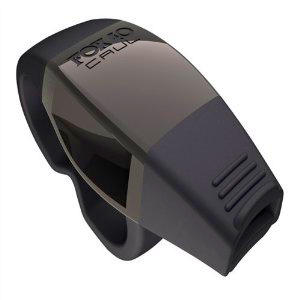 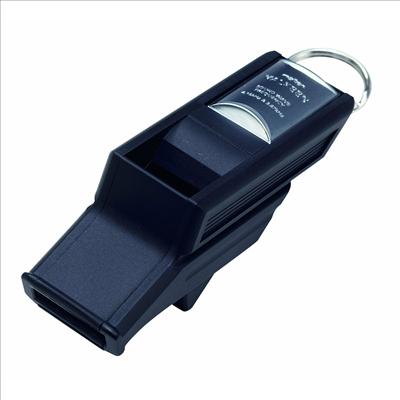 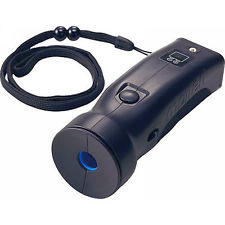 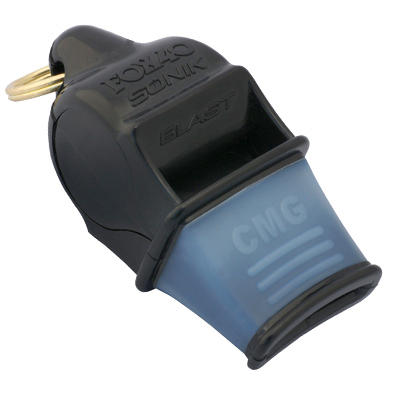
Here are some examples of whistles to sample and listen too.
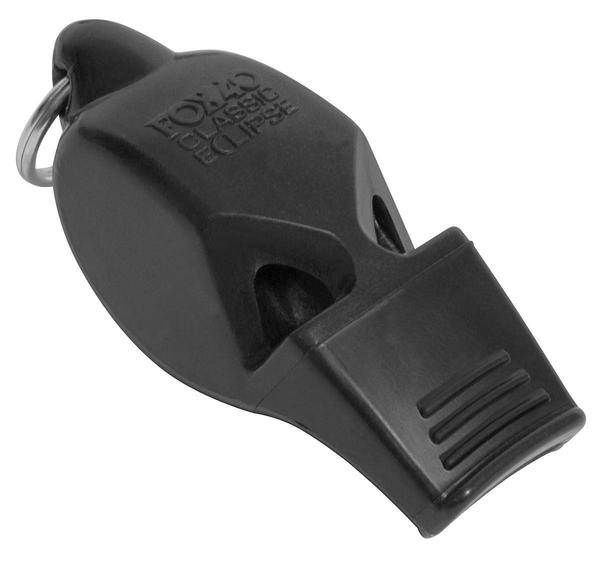 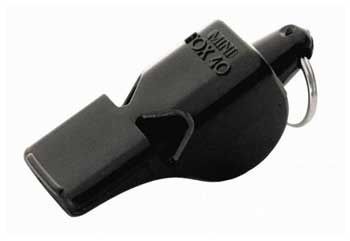 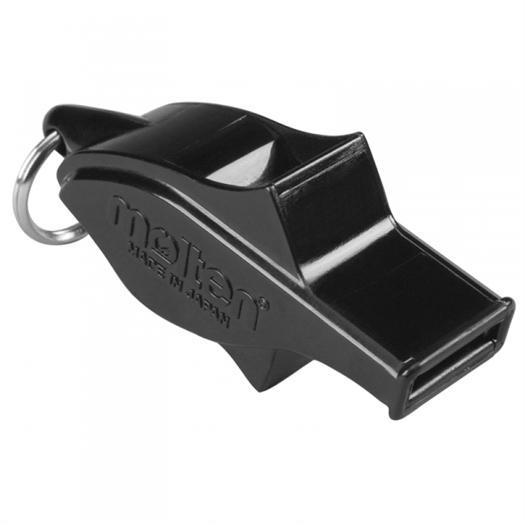    |

|

|

|

|

|

|
ACME Thunderer
|
ACME Metal Finger Grip
|
FOX 40 Caul
|
Valkeen
|
Molten Whistle
|
Sonik Blast
|

|

|

|

|

|

|
FOX 40 Eclipse
|
FOX 40 Mini
|
Molten Dolphin Whistle
|
FOX 40 Classic
|
ACME Tornado
|
FOX 40 Pearl
|
|
A Whistle Mentoring Opportunity
The below is from
dialogue from SocRef-L
A while ago, I had the opportunity to work with a
lesser-experienced colleague who, to put it gently, has some
room for improvement. (That is not meant to be
hyper-critical – I dare say that few of us have “arrived” as
perfect referees, including me.)
One specific area of need for him is “presence”, that rather
elusive category of putting one’s own stamp of personality
on the match; of building rapport with the players and
coaches by the nuanced forcefulness of style of one’s
interactions; with the goal that, later on, the referee need
apply only minimal amounts of force to guide the
participants away from evil and/or harm.
More specifically, his whistle technique sucked. He
frequently had one finger partially covering one or more of
the outlet holes, which ruins any wind instrument’s
performance. Toward the end of the first half, one of the
players told him (loud enough for me to hear) “We can’t hear
your whistle”. We were on the East end of a set of 3 fields,
I was on the East touch line, and the whistle from the
middle field was usually louder to me than his. I jumped at
the opportunity that that player’s comment gave me to
address this topic during half-time.
I asked if he minded a little feedback – he said go for it.
I noted the player’s comment, and mentioned that he seemed
to be blocking his whistles air-holes – he interjected that
he did that on purpose, to reduce the volume. I let him
know, rather firmly, that he needed to consistently and
uniformly increase, not decrease, his whistles volume – that
he was mezzo-piano at most [a soft whisper & small], and needed to aim for
fortissimo [to be Loud & Large]; that as part of his bigger goal of needing to
increase his presence, he needed to start by making his
whistle considerably louder. I suggested that, every time he
blew the whistle in the second half, he should see if he
could stop play on the West field.
It took a moment for that to sink in; I could tell he had
been aiming at being polite, and not whistling so loud as to
affect play on the next field. His whistle was noticeably
louder in the second half, and although he never managed to
stop play on the other fields, he told me after the match
(when prompted) that the players seemed much more responsive
to his calls – that he didn’t have to blow the whistle two
or three separate times to stop play (when they did not
respond to the first, which I gather was a much more common
experience for him); that he felt much more in control of
the match.
I hope the light bulb went on for him in this match. One of
the necessary progressions in each referee’s career arc is
to come to the realization that we need to be an active
participant in the match, not just a spectator in a yellow
shirt trying to stay out of the way of play; that we need to
be actively involved in guiding the players toward safe and
fair play, not just waiting to react when bad stuff happens;
and that the needs of this match outweigh the needs of the
match on the next field over (the other guy can take care of
matters over there as they arise).
One of the negative things that we referees occasionally get
accused of is being on a “power trip”, where we get our
jollies from being the guy in charge. Much more common, in
my experience, and usually more damaging, is the referee who
never learns to be sufficiently assertive, who never
develops the field presence to ride herd on a bunch of rowdy
ruffians. Especially if assignments working the older and
more aggressive teens/young adults are sparse, getting
acclimated to that required higher level of applying one’s
personality can be a challenge.
Our goal is not to cause hearing damage to the people near
us when we happen to blow the dang whistle; but it is our
goal to let the participants know we are in charge of this
rodeo.
Hurray: every once in a while we get a glimmer of hope!
You could tell he had been aiming at being polite, and not
whistling so loud as to affect play on the next field.
I have imparted to him is to carry at least two whistles
with different pitches and use the whistle with the pitch
different from the one on the next field.
Yeah... As well as having multiple whistles
(I carry three,
with different sounds), there are ways to blow appropriate
for each event, including the one where everybody needs to
stop right now, or when you want to indicate that BTW, the
ball went out over the touchline before reaching the goal
line, so we have a throw-in not a Goal Kick.
Some whistles are better than others at making these
distinctions.
|
|
You dropped your whistle... the Mechanics!
The below is from
dialogue from SocRef-L
I have never use a wrist, finger or neck lanyard for my
whistle in soccer.
I have dropped, had it hit out of my hand, or just fumbled
it clumsily no more than a dozen times in my 40+ year
career. In every case within a minute or two, having already
put my spare whistle into play, found my dropped one.
All my whistles have been black. A few of my favorite
whistles have been in use for over 20 years.
~ Richard Houser
I am puzzled by repeated references to the color of the
whistle helping to find it when dropped. All my whistles are
on wrist/finger lanyard or finger loop; have never dropped
one. Nor have I ever held one in my mouth as I saw in
Champions League games.
~ Ferenc Korompai
From viewing available videos, one might gain the impression
that there are two requirements for using a brightly-colored
whistle:
One must be a FIFA (Grade 1) Referee, and one must be
female. But I would not swear to this...
~ Doug Smith
Or one must've had one given to you by either a vendor at a
trade show or your daughter. Because you can never have
enough of those :)
~ Alex Fletcher
Only once have I ever dropped a whistle. It was on a wrist
lanyard and it must have unclipped itself during my holding
it.
A player jostled me and it fell off in to the very muddy
field. It was black and I never found it.
I always have two whistles on my wrist lanyard and a spare
back in the bag.
~ ...Larry Savell
No coin, easy fix... Rock, Paper,
Scissors
~ ...Larry Savell
I occasionally tell the story about the very first NFHS
matches I refereed.
I worked the JV match solo, and was joined for the Varsity
nightcap by two very senior referees (at the time, one a
grade 4, the other a grade 5).
The Referee (4) is getting ready to toss the coin, except he
doesn't have one! He asks us urgently, "Do either of you
have a coin?" AR1 (5) hands over a quarter.
As we are shaking hands and preparing to get into position,
4 is patting his pockets and says, semi-frantically,
"I don't have any cards! Do either of you have cards I can
borrow?"
As 5 is handing over yellow and red cards, he says,
pointedly, "I am NOT loaning you a whistle!"
The lesson I derived that day is that, no matter whether I
am carrying whistle, flag, or clipboard for this match, my
pockets should always be completely loaded.
You never know what the team will need. Not that that
implies I would loan out whistles, either.
~ Doug Smith
I normally lurk on this list but Doug's story below reminds
me of a story I have to share:
NAIA boys conference match (Number 1 and 2 in the conference
- near the end of the season), USSF 5 in the center, I'm AR
1 as a USSF 6, and AR2 is a USSF 7.
The last game between had been contentious.....
Teams are on the field, ready to kick off. CR runs over to
me and says (frantically at this point) do you have a spare
whistle?
Sure...
I covertly hand it to him and he proceeds to start the game
and end the half.
As we meet with the 4th and AR2 he asks casually "Okay, how
much will that whistle cost me?" My response was $100. He
said, "Man, that's an expensive whistle".
My response was: "The whistle is $5. The other $95 is for me
not to tell anyone......."
Needless to say, I've told that story plenty of times...
<grin>
Regards to all,
~ Hugh Griffis
USSF grade 16
Retired NISOA
I just don't understand not using a wrist lanyard. They are
cheap, and you can convert the things you find at key shops
to that use instantly.
There are times I need BOTH hands free, especially when
writing, and I don't want to stick my whistle in my pocket.
Using a lanyard, I can carry two or three whistles into each
game, and can make a quick change if I feel I need to.
I'm not going to claim a lanyard will prevent you from
dropping the whistle, however;
I did have the mounting ring on the back of one of my
favorites break off without my noticing, and the next time I
let loose of the group, it fell to the ground, again without
my noticing.
But since I had two others on the ring, we just played on. I
found the lost one later.
~ Jim MacQueen
Have you *tried* using a pair of whistles instead of the
wrist lanyard? I was a wrist lanyard advocate and thought
the folks that carried the whistle loose were nuts.
But I heard enough folk that I respected (here and
elsewhere) say that's how they did it, and saw guys on TV
doing it, so I finally figured I should at least try it
once, not expecting to do it more than once.
And I've never used a lanyard since.
I connect two different whistles. (And a spare pair in my
pocket.) I can move them from hand to hand -- no dangling
whistle on signals.
I can (rarely) leave the whistle in my mouth while taking my
hand away.
If I need both hands, I just slip a finger through the
connecting ring. I've never dropped them -- but if I did, I
have the spares in my pocket.
Consider giving it a try if you haven't already.
~ Steve... So Cal Lurker
I thought it wouldn't work for me until I tried it, too...
If you need two hands for something, you slide the ring
connecting the whistles onto your pinky -- no more in the
way that way than a whistle on a wrist lanyard.
I personally don't see any value to a third whistle in the
hand, but there's no reason you couldn't have the three
connected instead of just two...
As I said, I thought it was nuts till I tried it and really
liked it. As a convert, I'd encourage everyone to try it at
least once -- I suppose not everyone will like it, but
you won't know unless you give it a try.
~ Steve... So Cal Lurker
Nope. Doesn't work for me. I still have the same problem:
What do I do when I need two hands? And I connect THREE
total whistles on my wrist lanyard anyway.
~ Jim MacQueen
I think the point is that it's easy to drop a single whistle
if it's not connected to you in some way.
But two whistles plus the ring that joins them together is a
bit more mass that gives you more to hold on to, so it's
less likely you'll drop them.
I use three whistles on a ring that's also connected to a
wrist lanyard, although I don't put the lanyard around my
wrist.
That's very comfortable to hold, and I can also hold a
whistle in my mouth with both hands free if needed (or hook
it around one finger, as has been suggested), as it's not
heavy like my wife's huge collection of linked together
keys, medallions, and remote controls, that she somehow uses
to operate her car.
====================
I thought it wouldn't work for me until I tried it, too...
If you need two hands for something, you slide the ring
connecting the whistles onto your pinky -- no more in the
way that way than a whistle on a wrist lanyard.
I personally don't see any value to a third whistle in the
hand, but there's no reason you couldn't have the three
connected instead of just two...
As I said, I thought it was nuts till I tried it and really
liked it. As a convert, I'd encourage everyone to try it at
least once -- I suppose not everyone will like it, but you
won't know unless you give it a try.
~ Jim Geissman
Hey folks,
For whatever it's worth:
I used the wrist lanyard for a number of years. It worked
pretty well except I didn't like the stuff flopping around
my wrist when I let go to use both hands.
I switched from that to the ring with multiple whistles for
about a season. I didn't like having to move the ring
around.
I decided to do something different. I had been coaching a
girls team for a number of years.
One of the things I kept in my coaching bag was a snap link
full of girls' hair bands (black only - no metal). You can
buy 15-30 of them at Walmart for a couple of dollars - I
just did it again the other day.
I started keeping one of them on my practice whistle (so I
could find it in my coach bag...).
I found I liked it.
I put it on the middle finger (with one whistle) and I
haven't lost/dropped one since.
When I need two hands I just let go. It's there when I need
it. Depending on the field situation, I keep one or more
spares in my back (left) pocket - Ballila and Fox40 (with bands
on both as well).
If I need to change, I change when I can (ASAP).
So I started using those bands exclusively on my whistles.
NOTE: One of the things I learned from some State Referee
Mentors when I was a new grade 7 was that the Referee
doesn't do things that can potentially distract the players.
Not everyone feels that way; it's just what I learned from a
couple of pretty good Referees.
Both of them kept whistles in their hand - no lanyards at
all.
I lost a couple of whistles this way...
So I developed my own compromise. This one seems to work for
me and I don't have to mess with keeping a whistle under
control.
Food for thought...
Regards,
~
Hugh Griffis
USSF grade 16
Retired NISOA
I just found a hair band (teenage daughter) and a whistle
(me) in the house ... that really is a terrific idea. Feels
better than the wrist lanyard. Thank you!
~ Ron Antonette
I believe what you are describing is the finger lanyard. If
so, it was part of my original missive.
~ Ferenc Korompai
Except one would have to find/order/buy a finger lanyard,
whereas hair bands are abundant in some households! :-)
~ Ron Antonette
LOL. Pretty complicated path to looking ridiculous. :-)
BTW, you have to test that spring to make sure the recoil,
as you let go of the whistle from you mouth. will not hurt
you or somebody close by. :-O
Yes, in women lacrosse the goal signal must be given while
blowing the whistle. And the signal is made of two parts:
First, you raise both arms like a Touch Down signal and then
bring both arms down and
then transition to the 2nd part which involves moving both
arms forward together horizontally similar to the play-on
signal.
During this 2-step signal you whistle with the sound dipping
as you switch from first part of the signal to the 2nd part.
We had an official who insisted on using a whistle on a
wrist lanyard! You can imagine the contortions he would go
thru to give the signal and looked awfully ridiculous.
~ Reza Pazirandeh
I do what So Cal Lurker does...
I'm fairly new, but I learned this in a particularly funny
way so I'm sharing.
For four years, I used a hand lanyard, basically an elastic
key-chain around my palm with two whistles clipped.
It was comfy, I could transfer hands fairly easily for
signals, and I almost never dropped the whistles.
Then I had my first mass confrontation. I instinctively held
out my arm to indicate to the aggrieved team that they did
not all need to pile on the miscreant.
I did this while simultaneously trying to whistle, causing
the lanyard to stretch out while I made the hand motion...
I then released it and snapped it back into my face, nearly
knocking myself over.
Not my strongest moment, although I think a couple of the
players got enough of a laugh out of it that they forgot
about fighting each other.
From that point on, I've used the two whistles clipped
together. I hold them in exactly the same way I did when I
had the lanyard, but with less security.
My main goes between thumb and index finger. The other I
wedge between my third and fourth fingers so it acts a bit
like a Valkeen's finger grip.
I've still never dropped them (and I have two spares in my
pocket if I do) but now I can get both my hands free when I
need them.
~ Dylan Matthias
Another solution is to keep the extra, really loud whistle
all by itself (no clip/lanyard/etc.) in a
pocket. When the xhit hits the shan, the
Referee can quickly remove the wrist lanyard, and exchange
it for the bare whistle, which is then held tightly by one's
teeth while blowing long and loud, preferably close to the
ears of the brawling players. This keeps both hands free,
and provides no easy handles for players to grab (my most
compelling reason for disapproving of necklace-type
lanyards).
~ Doug Smith
Some whistles are easy or hard to hang on too!!!
Once you get the 'Mechanics' down the use of the whistle it will become second nature!!! 
|
STILL THIRSTY FOR MORE...? 
Referee Whistle Techniques
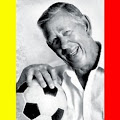 This Video from the... Ken Aston Referee Society -
This Video from the... Ken Aston Referee Society -
 Channel Channel

Referee Whistles Sounds
 This Video from the... Ken Aston Referee Society -
This Video from the... Ken Aston Referee Society -
 Channel Channel

Fox Whistle New Choices
 This Video from the... Ken Aston Referee Society -
This Video from the... Ken Aston Referee Society -
 Channel Channel

Hear you on the Pitch...Soon? 
|